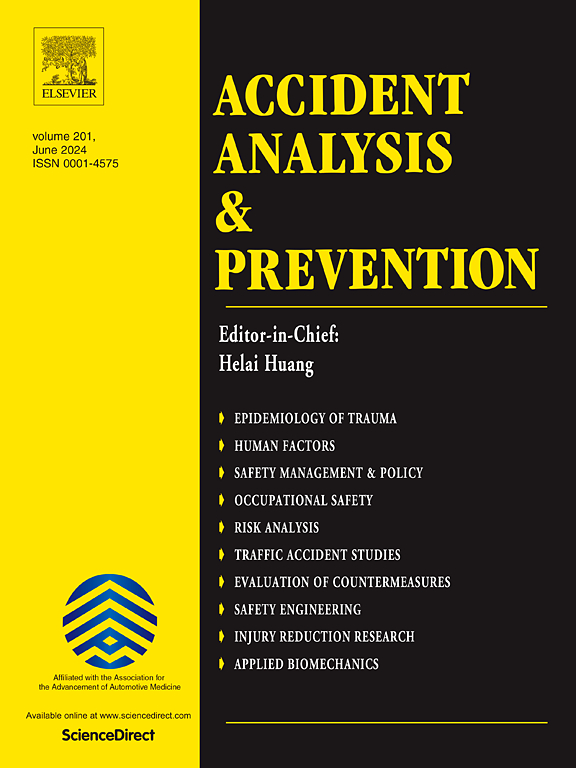CoRTSG:混合交通协同感知风险测试场景生成的通用有效框架
IF 6.2
1区 工程技术
Q1 ERGONOMICS
引用次数: 0
摘要
自动驾驶汽车的个人感知能力在克服闭塞和实现远距离可见方面面临着重大挑战。因此,合作或协同感知(COOP)近年来受到了越来越多的学术界的关注,它可以有效地扩展感知领域,并利用联网和自动驾驶车辆(cav)与路边单元(rsu)之间的车联网(V2X)通信,帮助检测人类驾驶的车辆或脆弱的道路使用者。尽管在数据集、仿真平台和算法方面取得了显著的进步,但对COOP系统的评估和测试方法的研究仍然缺乏,特别是在驾驶安全方面。本研究提出了一种通用有效的CoRTSG风险测试场景生成框架,该框架可以整合交通数据和先验知识,依次生成具有风险的功能、逻辑和具体场景。从由于视觉遮挡导致的交通碰撞中提取出与COOP相关的特定功能场景,从而定义其操作设计领域。随后,通过在opdrive地图上选择适当的地点,确定有风险的逻辑场景。本文还开发了一种快速的遮挡判断算法,在逻辑场景中为对象分配角色,并采用自回归采样来导出危险的具体场景。因此,在文献中首次建立了包含自动驾驶汽车、非自动驾驶汽车和弱势道路使用者混合交通环境下的11个功能场景和17490个具体场景的大型风险测试场景库。所有具体场景都在CARLA环境中进行了模拟,便于对具有代表性的COOP算法在检测精度、驾驶安全性和通信效率方面进行全面测试。结果表明,与个人感知相比,COOP显著提高了驾驶安全性和检测精度,但需要进一步优化以平衡性能与带宽需求,并确保稳定的安全性改进。数据和代码在https://github.com/RadetzkyLi/CoRTSG上发布。本文章由计算机程序翻译,如有差异,请以英文原文为准。
CoRTSG: A general and effective framework of risky testing scenario generation for cooperative perception in mixed traffic
The individual perception capabilities of autonomous vehicles face significant challenges in overcoming occlusions and achieving long-distance visibility. Consequently, cooperative or collaborative perception (COOP), which can effectively expand the perception field and help to detect the human-driven vehicles or vulnerable road users by leveraging vehicle-to-everything (V2X) communication among connected and automated vehicles (CAVs) and roadside units (RSUs), has garnered increasing academic attention in recent years. Despite notable advancements in datasets, simulation platforms, and algorithms, there remains a dearth of research focused on the evaluation and testing methodologies for COOP systems, particularly concerning driving safety. This study proposes a general and effective framework for Risky Testing Scenarios Generation for Cooperative Perception (CoRTSG), which can integrate traffic data and prior knowledge to sequentially produce risky functional, logical, and concrete scenarios. Specific functional scenarios pertinent to COOP are extracted from the traffic crashes due to vision occlusion, thereby defining its operational design domain. Subsequently, by selecting appropriate sites on an OpenDRIVE map, risky logical scenarios are determined. A fast occlusion judgment algorithm is also developed, assigning roles to objects within a logical scenario and employing autoregressive sampling to derive risky concrete scenarios. Accordingly, a comprehensive large-scale library of risky testing scenarios encompassing 11 functional and 17,490 concrete scenarios for COOP in a mixed traffic environment with CAVs, non-CAVs, and vulnerable road users has been created for the first time in literatures. All concrete scenarios have been simulated in the CARLA environment, facilitating thorough testing of representative COOP algorithms in terms of detection accuracy, driving safety, and communication efficiency. The results highlight that COOP significantly enhances driving safety and detection accuracy compared to individual perception, however, further optimization is needed to balance performance with bandwidth requirements and to ensure stable safety improvements. Data and code are released at https://github.com/RadetzkyLi/CoRTSG.
求助全文
通过发布文献求助,成功后即可免费获取论文全文。
去求助
来源期刊

Accident; analysis and prevention
Multiple-
CiteScore
11.90
自引率
16.90%
发文量
264
审稿时长
48 days
期刊介绍:
Accident Analysis & Prevention provides wide coverage of the general areas relating to accidental injury and damage, including the pre-injury and immediate post-injury phases. Published papers deal with medical, legal, economic, educational, behavioral, theoretical or empirical aspects of transportation accidents, as well as with accidents at other sites. Selected topics within the scope of the Journal may include: studies of human, environmental and vehicular factors influencing the occurrence, type and severity of accidents and injury; the design, implementation and evaluation of countermeasures; biomechanics of impact and human tolerance limits to injury; modelling and statistical analysis of accident data; policy, planning and decision-making in safety.
 求助内容:
求助内容: 应助结果提醒方式:
应助结果提醒方式:


